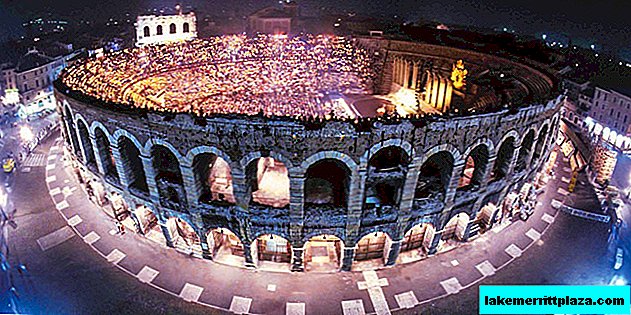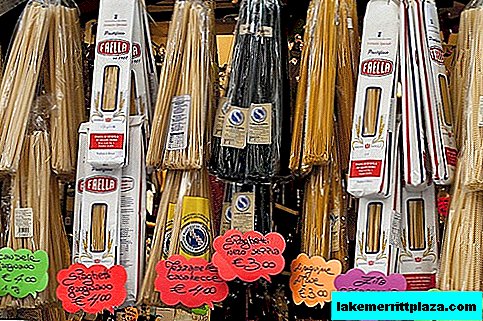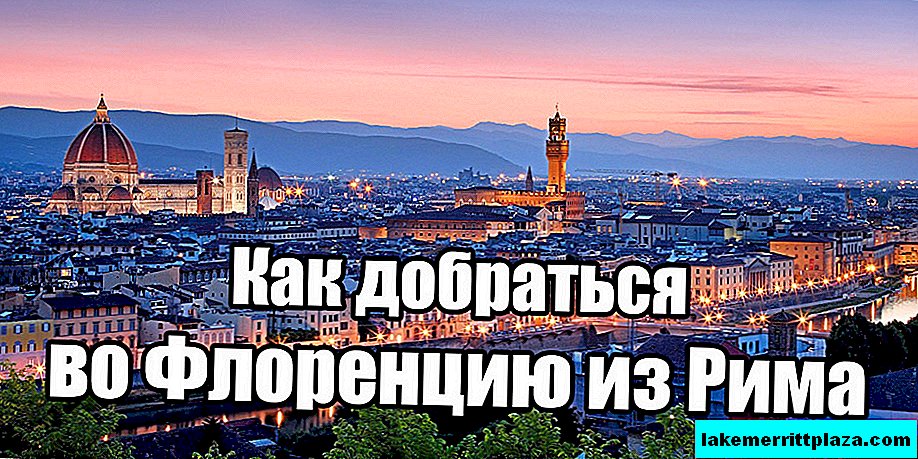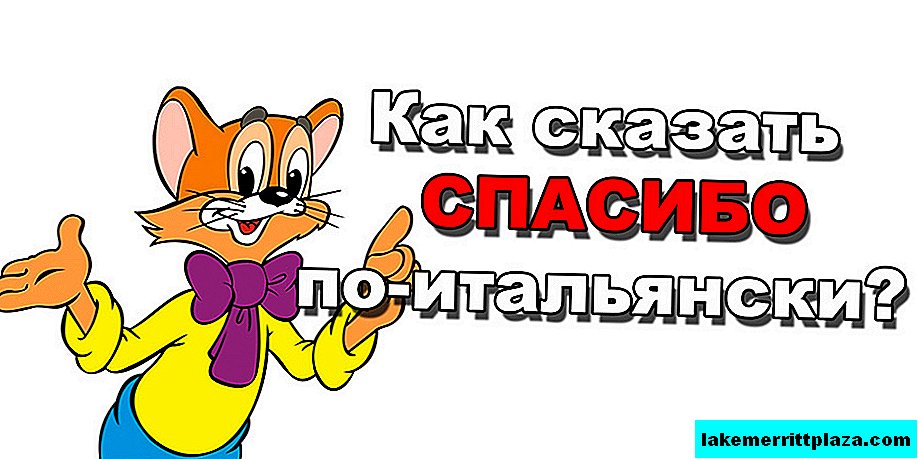Guests of Italy, especially theatergoers, Verona is well known for one of its main attractions - the ancient theater Arena di Verona (Arena di Verona). The Roman amphitheater from the outside looks as befits an ancient monument. But inside it is equipped with a theater platform, which annually hosts a brilliant opera festival.
Story
During the reign of Emperor Tiberius Julius Augustus (Latin: Tiberius Julius Augustus), an amphitheater was built in Verona. Its main purpose is to conduct spectacular gladiatorial battles.

After the fall of the Roman Empire, the amphitheater lost its former value, the construction fell into disrepair.
At the beginning of the XII century, a major earthquake that occurred in the north-east of Italy, caused significant damage to the ancient building. The collapsed outer ring of the theater, local residents began to use as a source of free building materials.
In the Middle Ages, Italy was seized by the power of the Inquisition. Severe judges used the dilapidated ruins as a venue for the public execution of dissidents. A few centuries later, Verona changed her mourning mood to a lighter one. The ancient arena was filled with spectacular battles of valiant knights and crowded festivities. In the late XVIII - early XIX centuries, Italy adopted the fashion for bullfighting, which often took place in the amphitheater.
Opening hours, tickets, how to get inside
The amphitheater is open for tourists on Mondays from 13:30 to 19:30, and on other days of the week from 08:30 to 19:30. Ticket offices close from 18:30. Tickets cost 10 euros.
Opera festival
A new milestone in the history of the Arena di Verona began with the advent of the 20th century. In 1913, the opera tenor Giovanni Zenatello and theater impresario Ottone Rovato, at their own peril and risk, invested money in the old building. The brave Italians managed to prepare and conduct the festival, dedicated to the centenary of the composer Giuseppe Verdi (Italian: Giuseppe Verdi).
Opera "Aida" has turned the Arena di Verona into the largest open-air theater in the world!

Since the summer of 1913, Verona has hosted a theater festival 79 times! During this time, influential figures in the Italian theater scene were involved in organizing opera productions. The arena has incredible acoustics, which allows viewers even in the most remote ranks to enjoy productions. A huge stage - excellent stages, containing the most unusual and impressive scenery.

In its best times, the amphitheater provided places for up to 20 thousand people! And only with the onset of the 2000s, the capacity of the Arena di Verona had to be reduced to 15 thousand for reasons of fire safety.
The open-air opera opens its season in June and lasts until the end of August. During this time, about 70 thousand theatergoers from all over the planet are in the stone walls of the amphitheater, and tickets sometimes turn into shortages!
In various years, the opera in the Arena di Verona received the owners of outstanding voices: dramatic soprano maria callas (born Maria Callas) in 1947, tenor Giuseppe di Stefano (Italian: Giuseppe Di Stefano) in the 1950s. Since 1971 lyric tenor Luciano Pavarotti (Italian: Luciano Pavarotti) becomes a regular at opera festivals in Verona.
He has performed many dramatic roles in the operas of Puccini (Italian: Giacomo Antonio Puccini), Verdi, Ponchielli (Italian: Amilcare Ponchielli), Leoncavallo (Italian: Ruggero Leoncavallo). In 1969 Spanish tenor Placido Domingo (Spanish: Plácido Domingo) attends an amphitheater. The young singer appeared on the opera "Turandot" by maestro Puccini. Subsequently, Italy will repeatedly see him in gala concerts in the ancient arena of Verona.

The modern poster of the festival is Italy's opera in its purest form. Her most famous masterpieces: Aida, Nabuco, Tosca, Don Juan, Barber of Seville, Romeo and Juliet, Carmen. They also give ballet and concerts by a symphony orchestra.
- In 2019, already 97 in a row opera festival will be held from June 19 to September 6.
Opera tickets
The following shows what the official website of ticket offices looks like:

Note that tickets have a different price range. The most budgetary places without rooms, located at the very top of the amphitheater, their cost is 15-25 euros. The most expensive tickets to seats located directly in front of the theater. Saturday night in this sector can cost 200 euros per visitor.
See instructions for buying concert tickets in Italy.
The photo below shows the layout of seats for spectators:

The location chart in PDF format can be downloaded in good quality here.
Adriano Celentano Concert
Opera created world fame for the amphitheater. In exceptional cases, the arena lends its stage to popular artists. The most striking illustration of this is the grandiose concerts of Adriano Celentano, which took place on October 8-9, 2012. The event is truly unique, since Celentano has been on creative leave since 1994 and has not given a tour. Italy did not see her idol for 12 years, and now, the artist again decided to please the fans with a live performance.
At the appointed hour, the ranks of the Arena di Verona simply burst with spectators, and tickets scattered in record time. Himself Adriano Celentano insisted that tickets for his performance should not exceed 15 euros.
The first concert was built not only on the singer’s song repertoire. The event focused on the Italian economy and the prospects for European democracy. In addition to guest singer Gianni Morandi (Italian: Gianni Morandi), the economist Jean-Paul Fitoussi (French: Jean-Paul Fitoussi) also took part in the concert.
The musical part of the concert was truly grandiose. Most of the material performed related to the new album "Facciamo finta che sia vero". To the delight of the fans, songs from the old repertoire were also performed: "Soli", "Il ragazzo della via Gluck", "Azzurro". Together with the 74-year-old Celentano, 18 musicians and two dozen backing vocalists worked. A striking light show elevated what is happening to the rank of magic.
The concert was broadcast on television and gathered an incredible number of viewers. Critics unanimously agreed that Adriano Celentano’s performance in Verona is “The Best Italian Concert of 2012”. On November 30, 2012, the Verona Administration solemnly handed over the keys to the city of Adriano Celentano.
Interesting facts and figures

The arena of Verona is smaller than the Roman Coliseum and the amphitheater in Santa Maria Capua Vetere (Italian: Santa Maria Capua Vetere). Previously, the ancient theater had 4 elliptical rings sequentially inscribed in each other.. The narrowest figure outlines the scene and the "Poltronissima" sector, its parameters are 44.43 m. The next ellipse, 73.68 m in size, is the outer border of the current building. Two other figures: 109.52 and 138.77 m outlined the already collapsed second ring.
How to get there
The amphitheater is located at: Bra Square, 5 Piazza Bra, 5). Piazza Bra is the central square of the city, which can be reached by taxi or by buses No. 11, 12, 13, 14, 72 and 73 (from the city railway station Porta Nuova).
- See instructions: how to get from Verona Airport








